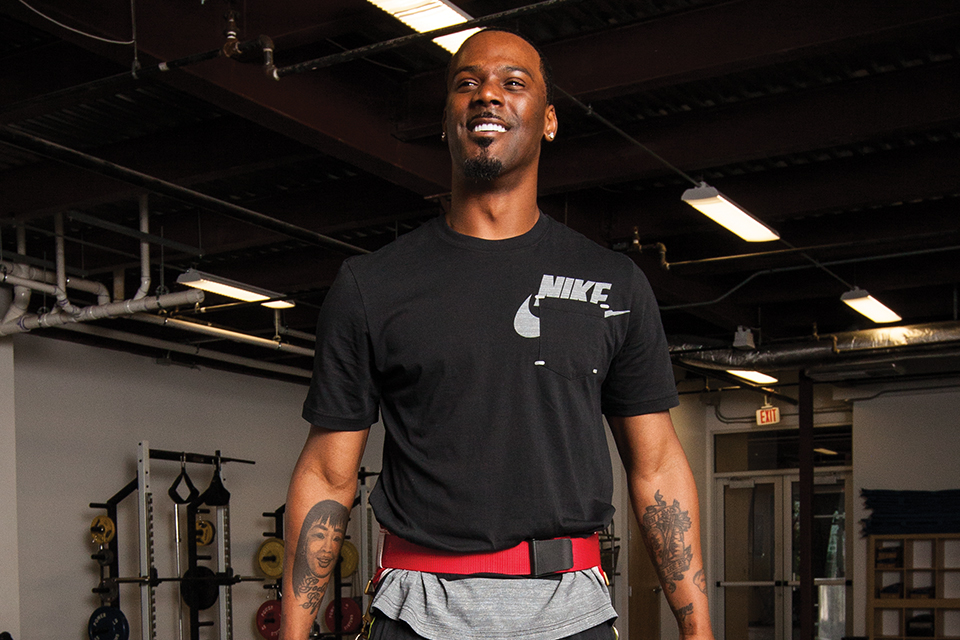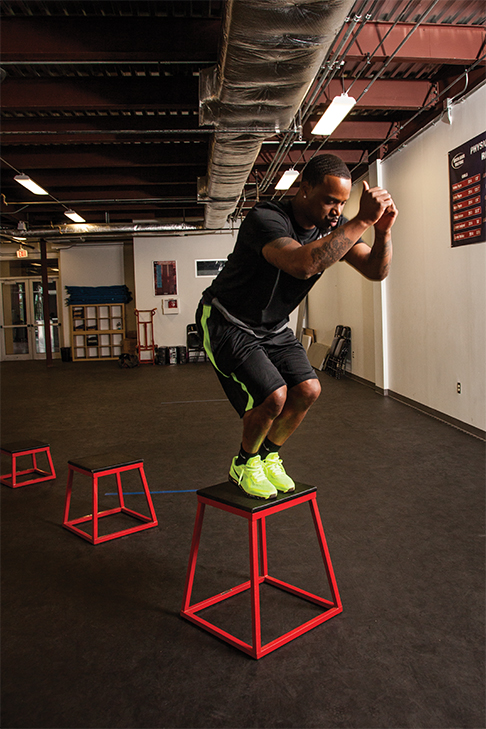The Corner Stone

Aaron Ross isn’t a football player by definition or design. Destiny, maybe. Distinction, definitely. Just look at his helmet, and the way he wears it. He’s always wearing it.
Growing up in Texas, his early years in San Antonio before finishing high school in Tyler, Ross knew no offseason. Football faded into basketball, and the springtime meant he was sprinting around the track. Ross was the playmaker, the one who made things happen. In the moments that mattered, the ball or baton needed to be in Ross’ grip. For the John Tyler Lions football team, Ross lined up as a cornerback, wide receiver, running back, and even quarterback. He couldn’t afford to put his helmet on the ground, or even rest it on his knee. Any moment could require action, so in brief gasps of respite, on the sideline or in the huddle, Ross would unstrap and slide his face mask skyward. One little tug, and he was ready to go.
His athletic versatility was attractive to the Texas Longhorns, who first recruited Ross as a wide receiver, but with classmates like Roy Williams and B.J. Johnson as worthy enough quarterback targets, Ross fell under defensive back guru Duane Akina’s wing as a cornerback. The position is actually a natural fit for Ross. A cornerback lives in a constant state of hustle, and with one tug, Ross was always ready to go.
For the cornerback, reactions must be quick, actions quicker. The cornerback exists to defend and offend. Planned retreat transforms into combustible collision. It starts at the line, identifying the formation. That’s obvious enough, but subtle motions, the twitch of a wide receiver’s eye perhaps, can indicate his intended route. This allows anticipation, and with that, movement. Because, when in a full-speed backpedal, energy can’t be wasted in the wrong direction. In an instant, the cornerback turns a frantic footrace into an all-out pursuit. Where’s the ball? There’s the ball. The ball gives permission to engage. See ball. Hit ball. Get ball. Ball, ball, ball, ball, ball.
“I enjoy the physical nature of the position,” Ross said.
A national champion and All-American at UT, where he also received the Jim Thorpe Award as the country’s best defensive back, Ross was selected in the first round of the 2007 NFL Draft by the New York Giants and started on their Super Bowl champion teams in 2007 and 2011. Ross’ football ways were bred on the fields of East Texas, originally plowed by Earl Campbell. The Tyler Rose rolled the gridiron into a dusty powder, swirling that dry dirt into a tumbling boil.
Campbell won the Heisman Trophy as a Longhorn, was the first pick in the 1978 NFL Draft by the Houston Oilers, and is a member of both the Pro Football and College Football Hall of Fame. This past fall, Ross joined Campbell as the inaugural members inducted into the John Tyler High School Hall of Honor. Across from Campbell’s offensive powerhouse stands Ross’ defensive protocol.
At 6-foot-1 and just shy of 200 pounds, Ross isn’t the one to always lay the wood. He is, after all, the one people call “Silky.” Sure, he’s smooth, but he’s also sure to wrap you up. As a tackler, Ross’ angles had to be just right, popping ball carriers at just the right spot and speed. Identify target, deliver the blow, and hold on.
“I just like defense. I like being physical and hitting people,” Ross explained.
Indeed, Ross prospers when mentored by those who encourage his physicality. Growing up, it was his uncle, a man whose stature Ross hopes to replicate as a maturing adult. In college, it was Duane Akina who extracted Ross’ skills.

As the secondary coach for 13 years at UT, Akina was the mastermind behind the famed DBU (Defensive Back University), which produced 11 NFL defensive backs. Ross trained with a stone-cold crew of heavy-hitters, including Tarrell Brown, Michael Huff, Michael Griffin, and Cedric Griffin. A badge of honor was earning placement on Akina’s position-room video of big plays, and his verbal stamp of approval. “Oh, that was a great lick,” Akina would say when one of his defenders mowed down a ball carrier.
Timing, which is crucial to any defensive back’s movement on the field, has certainly provided the story arch to Ross’ football career. His burst onto the scene with the Longhorns was actually delayed two years, after the NCAA clearinghouse ruled Ross academically ineligible to compete his freshman year. One day Ross was on the practice field backing up Quentin Jammer, and the next in head coach Mack Brown’s office being informed he couldn’t play. An English credit was in question, and the NCAA didn’t accept Ross’ high school transcript.
“I worked, prayed, essentially went back to high school,” Ross said. “I don’t really like regrets. I just like to learn from everything that has happened. That situation taught me to always take care of the details.”
Ross then became an NFL rookie at 24, drafted No. 20 overall by the Giants. In seven NFL seasons, Ross has totaled 250 tackles and 11 interceptions. Ross starred on New York’s 2011 Super Bowl champion squad, starting a career-best 16 games and also notching career-bests with 60 tackles and four interceptions on the season.
The following year Ross signed as a free agent with the Jacksonville Jaguars. They finished the 2012 season with just two victories and tied for the league’s worst record. Injuries have hampered Ross since. After re-signing with the Giants for 2013, Ross appeared in just four games and was placed on injured reserve with a back injury.
This past offseason, Ross rededicated himself to focusing on his passion for the game. He lifted weights in the morning, performed afternoon footwork and speed drills specific to his position, and also cleaned up his diet. Known to many friends as the “Candyman,” for his love of sweets, Ross ate primarily fish, vegetables, and nuts. His energy gains were significant, and it resulted in Ross beating out a handful of other cornerbacks for a spot on the Baltimore Ravens’ training camp roster.
Steve Spagnuolo coaches the secondary for the Ravens, and he was Ross’ position coach with the Giants. “When we (the New York Giants) drafted Aaron as a rookie, what we immediately saw in him was a highly competitive guy,” Spagnuolo said. “And even though he didn’t know everything early on, he was always willing to compete. I was always impressed with not only his athletic ability, but also his ability to pick things up and learn as quickly as he did.”
On the first day of training camp, Ross tore his Achilles tendon in a conditioning drill, and will miss the remainder of the season. Now 32, Ross faces a future that he’s determined to not let be affected by his past. No regrets, just lessons and action.
One tug, and Ross is always ready to go.
“I think my life in general kind of molded me to be a better cornerback,” Ross said. “All the struggles and life lessons I had to learn and forget about—that’s basically been the point of being a corner, you have to have a short memory.”






